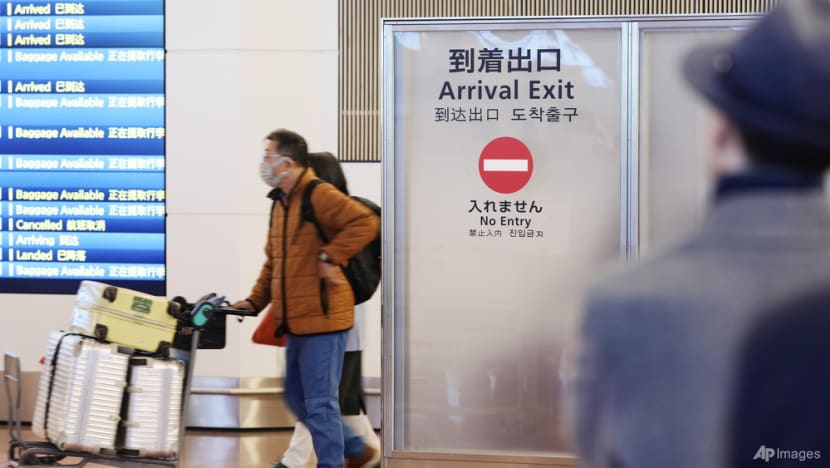As Japan’s tourism rebounds, Tokyo’s Haneda Airport turns to automation to decrease reliance on manpower
The number of international flights landing in Haneda was 17.5 per cent more this October than in the same month in 2019 before the pandemic, according to flight data released by Official Airline Guide.


This audio is generated by an AI tool.
TOKYO: Japan’s inbound tourism has made a quick recovery from COVID-19, even surpassing pre-pandemic numbers, owing partly to a weak yen.
Data from the Japan National Tourism Organization (JNTO) showed that the number of arrivals in October this year was 0.8 per cent higher than in the same month in 2019.
With the Bank of Japan (BOJ) keeping interest rates low while other central banks aggressively hiked theirs, the Japanese yen has been weakening against the currencies of major economies, making it an attractive tourist destination for many around the world.
Since 2012, the Japanese government has made a concerted effort to boost foreign arrivals. In 2019, Japan’s tourism industry became the world’s third largest until COVID-19 put a brake on the boom.
BOOST FOR JAPANESE ECONOMY
The return of foreign visitors is a much-needed boost for the Japanese economy, which has seen domestic spending, a traditional growth engine, stagnating.
Chief economist at UBS Securities Japan Masamichi Adachi noted that domestic demand, consumption and capital expenditure contracted again in the third quarter of this year.
“In real GDP (gross domestic product), it grew 1.2 per cent in Q3. Inbound tourism contributed 0.7 per cent of that. I can say the only theme in the Japanese economy now is tourism. Inbound tourism. Not domestic demand,” he said.
Amid the boom, the country’s largest and busiest airport, Tokyo’s Haneda Airport, is taking steps to get itself ready for further growth with the use of technology.
The number of international flights landing in Haneda was 17.5 per cent more this October than in the same month in 2019 before the pandemic, according to flight data released by Official Airline Guide.
FUTURE-PROOFING HANEDA AIRPORT
Haneda Airport recently launched a new facility, where it has been testing out various initiatives aimed at future-proofing its operations, given Japan’s shrinking labour force and ageing population.
From deploying robot chefs to 3D-printed sushi and driverless vehicles, the hope is that the airport may eventually not need more manpower to handle the growing number of visitors.
General manager of Haneda Future Development Atsushi Kato said: “For autonomous driving, we aim to achieve level four (of the self-driving system). We are expected to gain approval to operate at this high level. A driverless bus will run between airport terminals, 24 hours (a day).”
There are also hopes to improve tourist numbers further.
“Currently 20 to 30 per cent of our customers are from overseas. We need to promote our facility so that eventually, half of our customers are inbound visitors, said Mr Tomohiko Watanabe, public relations officer at Hotel Metropolitan Tokyo Haneda.
However, one of the missing pieces of the puzzle of Japan’s tourism rebound is mainland Chinese tourists. Their arrivals are at 35 per cent of pre-pandemic days, with JNTO saying that the number of flights between Japan and China is still limited.
Before the pandemic, the Chinese, who typically travelled abroad in tour groups, accounted for the biggest number of tourists to Japan. They also spent the most.
In October 2019, 730,631 Chinese tourists visited Japan. However, in October this year, the number was at 256,300, a 65 per cent drop. Instead, South Koreans formed the biggest proportion of tourists.

















